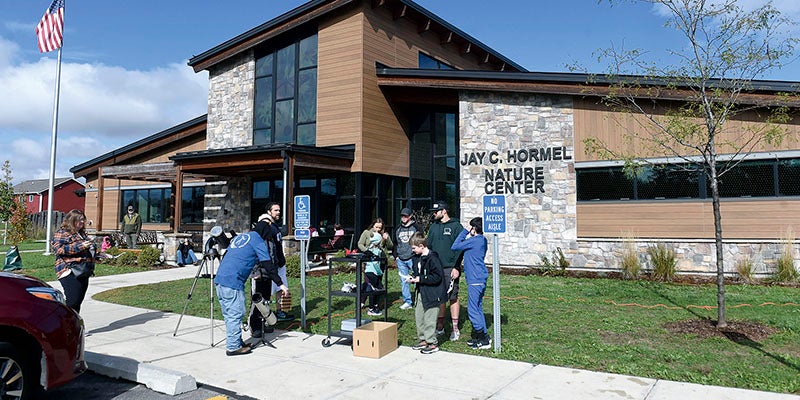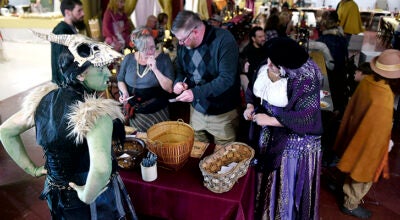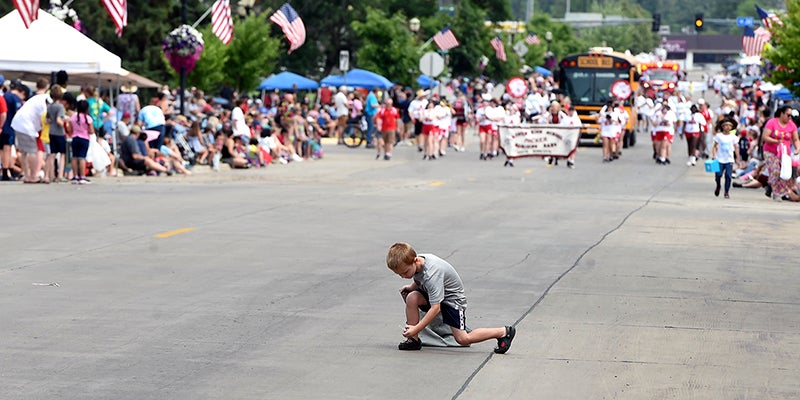A look at International Harvester history
Published 7:52 am Tuesday, May 17, 2011
If thousands of fans of International Harvester are coming to Albert Lea, it’s going to be handy to know a bit of the company’s storied history.
Here is a primer on International Harvester and its products — the reasons the International Harvester Collectors Club is bringing the Red Power Roundup to Albert Lea on June 23, 24 and 25.
It all goes back to inventor Cyrus McCormick, a Virginian who obtained a patent for a horse-drawn reaper in 1834. In 1848, he and his brother began mass producing the machines in Chicago. As America moved westward via railroad, so did his reapers, sold at first by Cyrus H. McCormick & Brothers, then by McCormick Harvesting Machine Co.
The Great Chicago Fire of 1871 destroyed the McCormick factory, but it rebuilt in a larger factory on the southwest side.
With financing from J.P. Morgan, McCormick Harvesting in 1902 merged with Deering Harvester Co., Plano Manufacturing Co., Milwaukee Harvester Co. and Warder, Bushnell & Glessner, forming a company called International Harvester. The company controlled 90 percent of the grain binder business.
In 1905, International Harvester manufactured its first tractor. In the 1920s, what many consider to be the first successful row-crop tractor was the Farmall, a model made by International Harvester. It employed high ground clearance and the tricycle configuration — two big wheels in the back spaced apart with two little wheels in the front close together — that now is the iconic image of a tractor.
Farmall went from being a model to a model line. It was known for being the general-purpose tractor farmers sought when replacing their teams of horses to lower costs.
By 1931, Farmall came out with a more-powerful second line called the F-30, so the original Farmall line became known as Regular. Hence, people will say terms at the Red Power Roundup such as a 1926 Farmall Regular. Soon, all the Farmall tractors were given F-Series designations. The Farmall Regular became the F-20. A smaller version was the F-12, replaced in 1938 by the F-14.
Many of the Farmall tractors were gray with red wheels, and on Nov. 1, 1936, IH adopted Harvester Red No. 50 (aka Farmall Red) as the color for all of its tractors and farm implement.
Farmers could see their neighbor in the field far away and know that if it were orange it was an Allis-Chalmers, green most likely a John Deere and red a Farmall.
In 1939, International Harvester brought forth a sleeker design for its Farmall tractors and replaced the F-Series with an array of letters. If you want to speak IH jargon, you have to know these letters. They were A, B, BN, C, H, M and MD.
A was the smallest, while M the most powerful. MD had a diesel engine. The C model replaced the B and BN in 1948. The most popular, though, was the H model. In the 1950s, the word “super” was added to the letter series, to create names like the 1953 Super H. Built to last, these machines are the prime stuff of the enthusiasts coming to Albert Lea.
So are the Hundred Series of this era.
Yes, International Harvester switched to numbers as it began to offer even more models. That began in 1955. Farms sported tractors such as the Model 350. The bigger the number, the more power the tractor had.
In 1947, International Harvester introduced the Cub, an even smaller tractor. Soon it made the lawn tractor Cub Cadet. IH sold the Cub Cadet division to MTD Products in 1981, and it makes them still.
The company made light trucks starting in 1907 and stopped in 1975. It continued making heavy-duty trucks and industrial trucks. It also made refrigerators, freezers and air conditioners, which grew out its line of milk coolers and walk-in freezers. The refrigeration division was sold to Whirlpool Corp. in 1955.
It is generally agreed that IH had a corporate culture that stifled new ideas. Changes in industry also resulted in products that weren’t meant to stick around forever. Plus, the company didn’t seem to know whether to be a farm-equipment company, a truck manufacturer or a home appliances maker.
The Tenneco Corp. had purchased Case in 1967 and bought International Harvester’s farm-equipment division in 1985, forming Case IH. Case IH merged with New Holland to became CNH Global in 1999, of which Fiat International is the majority owner. CNH Global makes its tractors under the Case IH brand.
After the 1985 sale, International Harvester still had the truck and engine divisions. No longer owners of the IH name or logo, the company changed its name to Navistar International Corp. It developed a V8 diesel engine that was sold in Ford pickups since the early 1980s up to last year.
Navistar’s branched into the production of school buses and a wide array of diesel-powered trucks, from service trucks to over-the-road trucks. It also produces military armored vehicles.
Who knew that the company that first marketed the horse-drawn reaper would eventually make the buses that take kids to and from school? Somewhere in between, it made some innovative and durable tractors that endear tens of thousands of fans to gather at annual festivals.





